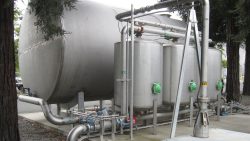Rebbits in india
Rabbit farming, also known as cuniculture, is gaining traction in India as a promising agricultural pursuit. While relatively new compared to traditional livestock farming like poultry or cattle, rabbit farming offers several advantages that appeal to farmers and consumers alike. This article explores the growth of rabbit farming in India, its benefits, challenges, and future prospects.
Overview of Rabbit Farming in India
Rabbit farming involves the controlled breeding and raising of rabbits primarily for meat, fur, and sometimes for laboratory use or as pets. In India, rabbit farming has emerged as an alternative livestock option due to several factors:
1. Economic Viability
Rabbits are efficient converters of feed to meat, producing high-quality protein at a relatively low cost compared to larger livestock like cattle or pigs. This makes rabbit farming economically attractive, especially for small-scale farmers looking to diversify their income.
2. Rapid Reproduction
Rabbits have a high reproductive rate, with does (female rabbits) capable of producing multiple litters in a year. This quick turnover allows for rapid expansion of a rabbit farming enterprise.
3. Low Space and Feed Requirements
Rabbit farming requires less space and feed compared to other livestock. Rabbits can be raised in small hutches, making it suitable for peri-urban and even urban settings. They can also be fed on a diet of greens, hay, and commercial pellets, reducing feed costs.
4. Health Benefits and Market Demand
Rabbit meat is considered lean and nutritious, appealing to health-conscious consumers looking for alternatives to traditional meats. The demand for rabbit meat is growing in India, driven by changing dietary preferences and awareness of health benefits.
Challenges Facing Rabbit Farmers
Despite its potential, rabbit farming in India faces certain challenges that need to be addressed for the industry to thrive:
1. Lack of Awareness and Infrastructure
Many farmers are unfamiliar with rabbit farming techniques and best practices. Training and support in rabbit husbandry, disease management, and marketing are essential to encourage adoption.
2. Limited Processing and Marketing Facilities
The lack of dedicated rabbit meat processing and marketing infrastructure poses a hurdle for farmers trying to scale up production and reach wider markets. Investment in cold storage and processing facilities would boost the industry.
3. Disease Management
Rabbits are susceptible to various diseases, including respiratory infections and intestinal issues. Proper disease prevention and veterinary care are crucial to maintain healthy herds.
Future Prospects and Government Initiatives
Despite the challenges, the future looks promising for rabbit farming in India. The government, recognizing the potential of this sector, has introduced various schemes and subsidies to promote rabbit farming among farmers. These initiatives include:
- Financial assistance for setting up rabbit farms.
- Training programs for farmers on modern rabbit farming techniques.
- Support for the development of rabbit breeding centers and processing units.
Conclusion
Rabbit farming presents an exciting opportunity for Indian farmers seeking to diversify their agricultural activities. With its economic benefits, low resource requirements, and growing market demand for rabbit meat, this sector has the potential to flourish and contribute to India’s agricultural landscape. By addressing challenges through education, infrastructure development, and government support, rabbit farming can emerge as a sustainable and profitable venture for farmers across the country.




































































https://www.footeo.com/en_US/users/the-prestige-city-hyderabad-review
https://www.lovecrafts.com/en-gb/user/The-Prestige-City-Hyderabad-Review/d3cb6d6a-a669-4311-bd10-db58b2547fba
https://youpic.com/the_prestige_city_hyderabad_revi/bio
https://community.onespan.com/user/markdillon
https://gitlab.bsc.es/hydunitreview
https://www.visorando.com/page-21103822/
https://old.meneame.net/user/hydunitreview
https://www.doyoubuzz.com/mark-dillon
http://www.hydunitreviews.citymax.com/index.html
https://www.hearingtracker.com/users/prestige-clairemont-review
https://www.eva.ro/club/profile/clairemontreview
https://giveit.link/PrestigeClairemont
https://virtualacademy.officer.com/members/clairemontreview/
https://platform.blocks.ase.ro/blog/index.php?entryid=35339
https://jobs.motionographer.com/employers/3024693-prestige-clairemont-review
https://wallpapercave.com/u/pavanpavar
https://forums.servethehome.com/index.php?members/clairemontreview.104479/#about
https://wallhaven.cc/user/clairemontreview
https://oldgit.herzen.spb.ru/sobhacrystalmeadows
https://www.slideserve.com/sobhacrystalmeadows
http://forum.yealink.com/forum/member.php?action=profile&uid=332823